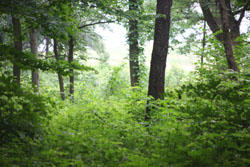F.A.Q.
- I can’t find my queen. Am I queenless??
You don’t need to see the queen. If you can see eggs and open larva, that means you most likely have a queen. Eggs hatch on the 3rd day so there was a queen laying 3 days ago.
If there is no evidence of open brood, look for opened queen cells. It could be that the queen was superceded and the new queen has not started laying yet. In general, it takes 30 days for an egg to grow into a queen cell, emerge, mate, return to the hive and begin laying eggs.
To check for queenrightness before purchasing a new queen, place a frame of open brood with eggs into the hive. If the colony is queenless, they will begin making queen cells within 48 hours. If it already has a queen, the colony will adopt the brood and raise it as its own. If you place a new queen in a colony that has a queen, the colony will kill the new queen.
A queenless colony is often louder and more aggressive when opened.
- How do I merge a weak colony with another one?
First determine why the colony is weak. Test for mites. Do you suspect any disease? Ask your inspector to look for any problems. How old is your queen? (keep records) Older queens aren’t as productive.
To merge two colonies, Open the weak hive and place a piece of newspaper over top. Place the stronger colony on top and close the hive. The queen on top will usually prevail. You can also destroy the queen of the weaker colony before merging them. It is better to access your colonies in the fall and merge weak ones rather than nurse a weak colony through the winter only to have it fail.
- How do I know if my bees have enough food to make it thru the winter?
Your bees need to have between 70 to 100 pounds of honey to make it through the cold season. If possible, weigh your hive. If not, lift it from the back. It should be almost too heavy to lift. Compare it to lifting a 70 to 80-pound bag of dog food. If it is light in weight, feed it.
Sugar syrup should be 2 parts sugar to one-part water in the fall. This ratio makes it easier for the bees to dry down quicker. Every gallon of syrup the bees take will add 7 pounds to the hive’s resources. Once temperatures drop below 40 degrees, stop feeding liquid syrup. Cold liquids mess up their ”gut” functions. Switch to candy boards, candy bricks, fondant, or, in an emergency, granulated sugar poured on top of the inner cover. Do not give granulated sugar to a colony if it is still flying. They will carry it out of the hive. Check for pollen reserves by inspecting brood frames. If there are little or no pollen stores, place a piece of a pollen patty on top of the brood frames. Keep the pieces small if there is evidence of Small Hive Beetle in the colony.
